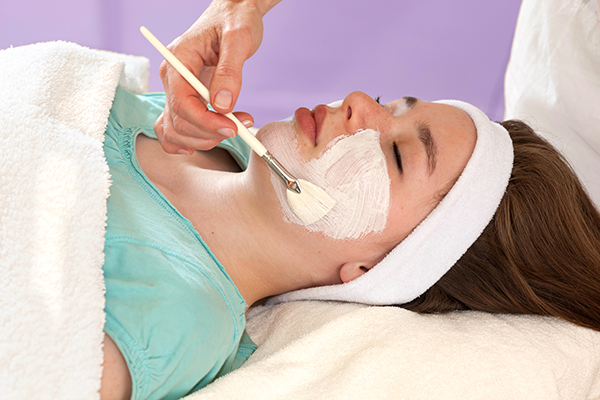Chemical Peels
Different peels are suited to different skin types and different skin conditions. Peels vary in strength and range from moderate penetrating, causing a lot of shedding and flaking, to very superficial, where no peeling or flaking may be experienced at all.
Salicylic Acid Peel
Salicylic, or Beta-Hydroxy Acid (BHA) peels are ideal for oily and acne prone skin types. In the right oily-skin environment, this peel as the ability to penetrate deep into the skin and ‘cut-through’ oil that may be causing breakouts and congestion. As this peel is highly attracted to oil, it may be ineffective on non-oily skin types. Salicylic peels vary in strength and can be layered with other peels for faster, more effective results.
Lactic Acid Peel
Lactic acid, or Alpha-Hydroxy Acid (AHA) peels are suitable for all skin types. They range from very gentle to moderate in strength. Lactic acid peels remove the top layers of skin from the skins surface and induce collagen stimulation, leaving your skin feeling fresh and rejuvenated. Lactic acid peels can be layered with other peel types for more effective results; however, this may increase the downtime you experience.
Retinoic Acid (Vitamin A) Peel
Retinoic acid is an ingredient found in many skin care products, however, in a much lower concentration than in this peel. Vitamin A peels increase the natural turnover rate of skin cells, causing you to shed the top layers of skin, forcing your skin to act like ‘young’ skin again. Vitamin A peels are a very effective anti-ageing peel, or for those with significant sun damage. Retinoic acid peels are only suitable for those who have been using a vitamin A cream on their skin for at least 6 weeks prior to the peel.
Other common chemical peels can include
Trichloroacetic Acid Peel
Jessner Peel
Chemical Peels are used to:
- Reduce fine lines under the eyes and around the mouth
- Treat wrinkles caused by sun damage and aging
- Improve the appearance of mild scars
- Treat certain types of acne
- Reduce age spots, freckles, and dark patches (melasma) due to pregnancy or taking birth control pills
- Improve the look and feel of skin
- Areas of sun damage may improve after chemical peeling.

What To Expect After Treatment
After a chemical peel, skin is temporarily more sensitive to the sun, so wear sunscreen every day. It should say "broad-spectrum" on the label, meaning it protects against the sun's UVA and UVB rays. Limit your time in the sun, especially between the hours of 10 a.m. and 2 p.m., and wear a wide-brimmed hat.
Depending upon the type of chemical peel, a reaction similar to sunburn occurs following the procedure. Peeling usually involves redness followed by scaling that ends within three to seven days. Mild peels may be repeated at one to four-week intervals until you get the look you're after.
Medium-depth and deep peeling may result in swelling as well as blisters that may break, crust, turn brown, and peel off over a period of seven to 14 days. Medium-depth peels may be repeated in six to 12 months, if necessary.
